Les 9 meilleurs superaliments japonais pour améliorer votre santé

Le Japon est souvent célébré pour sa longévité et ses faibles taux de maladies liées au mode de vie, et ce mérite revient en grande partie à son alimentation traditionnelle. Riche en ingrédients fermentés, à base de plantes et riches en minéraux, la cuisine japonaise n'est pas seulement délicieuse ; c'est pratiquement une boîte à outils de bien-être déguisée en nourriture réconfortante.
Qu'il s'agisse de haricots fermentés géniaux ou de simples algues présentes dans votre soupe miso, ces aliments sont appréciés depuis des siècles, et la science moderne est en train de rattraper le retard de la sagesse de grand-mère : ils regorgent de nutriments qui favorisent la digestion, l'immunité, la santé cardiaque et même le bien-être mental.
Alors, si vous êtes prêt à découvrir les 9 meilleurs superaliments japonais qui permettent aux gens de rester en bonne santé (et de sourire) au pays du soleil levant, plongeons-nous dans le vif du sujet !
Classement des superaliments japonais pour améliorer votre santé :
- Natto
- Algues marines (Wakame, Kombu, Nori)
- Miso
- Vinaigre noir
- Soba
- Umeboshi (prune séchée)
- Yam (Nagaimo, Jinenjo)
- Thé Kombu
- Amazake
1. Natto
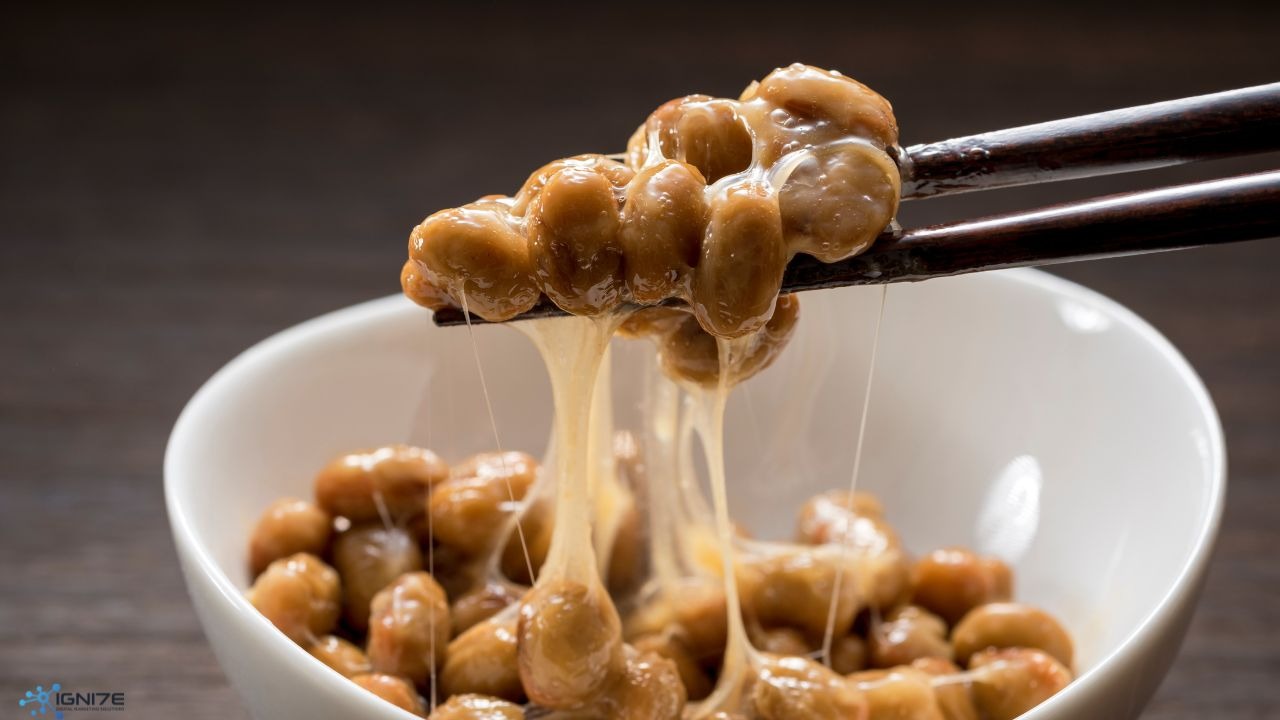
Le natto est peut-être l'aliment le plus conflictuel du Japon, apprécié passionnément par certains et craint par beaucoup. Fabriqué à partir de fèves de soja fermentées, le natto est collant, filandreux et possède un arôme que l'on pourrait poliment qualifier de... « audacieux ». Mais derrière cette texture et cette odeur inhabituelles se cache une véritable superstar de la nutrition.
- Nutriments clés : vitamine K2 (pour des os solides), nattokinase (une enzyme liée à la santé cardiaque) et probiotiques pour l'équilibre intestinal.
- Bienfaits pour la santé : Soutient la densité osseuse, améliore la circulation en fluidifiant le sang et favorise la santé du microbiome intestinal.
- Fait amusant : de nombreux Japonais ne jurent que par un bol de natto sur du riz au petit-déjeuner ; c'est comme leur version des céréales, mais avec beaucoup plus de punch probiotique.
Si vous pouvez surmonter son « goût acquis », le natto est l'un des superaliments les plus puissants de cette liste.
2. Algues marines (Wakame, Kombu, Nori)

Les algues marines ne sont pas simplement des emballages de sushis ; c'est un trésor de nutriments tout droit sorti de la mer. Qu'il s'agisse du wakame dans la soupe miso, du kombu utilisé dans les bouillons ou des feuilles de nori pour emballer vos sushis préférés, les algues jouent un rôle discret mais essentiel dans le régime alimentaire japonais.
- Principaux nutriments : iode (pour la santé de la thyroïde), calcium, fer, magnésium et fibres alimentaires.
- Bienfaits pour la santé : Aide à réguler le métabolisme, soutient la solidité des os, facilite la digestion et peut même réduire le taux de cholestérol.
- Fait intéressant : le kombu est un ingrédient essentiel du dashi, le bouillon salé qui constitue l'épine dorsale de la cuisine japonaise cuisine. Sans algues, Cuisine japonaise Ça n'aurait tout simplement pas le même goût.
Légères, polyvalentes et riches en minéraux, les algues marines prouvent que les meilleurs superaliments se cachent parfois à la vue de tous.
3. Miso

Le miso est peut-être mieux connu pour être la star de la soupe miso, mais cette pâte de soja fermentée est bien plus qu'une simple base de soupe. Doté d'une saveur riche et riche en umami, le miso est la pierre angulaire de la cuisine japonaise depuis des siècles et offre des bienfaits impressionnants pour la santé.
- Nutriments clés : probiotiques, protéines, vitamines (B2, E, K) et minéraux essentiels comme le manganèse et le cuivre.
- Bienfaits pour la santé : Favorise la digestion, renforce l'immunité, peut aider à réduire l'inflammation et a même été associé à une meilleure santé cardiaque.
- Fait intéressant : Il existe de nombreux types de miso, allant du miso blanc sucré au miso rouge profond et salé. Chaque région du Japon a ses particularités !
Un bol chaud de soupe miso n'est pas qu'un plat réconfortant ; c'est littéralement un rituel de santé quotidien pour des millions de personnes au Japon.
4. Kurozu (vinaigre noir)
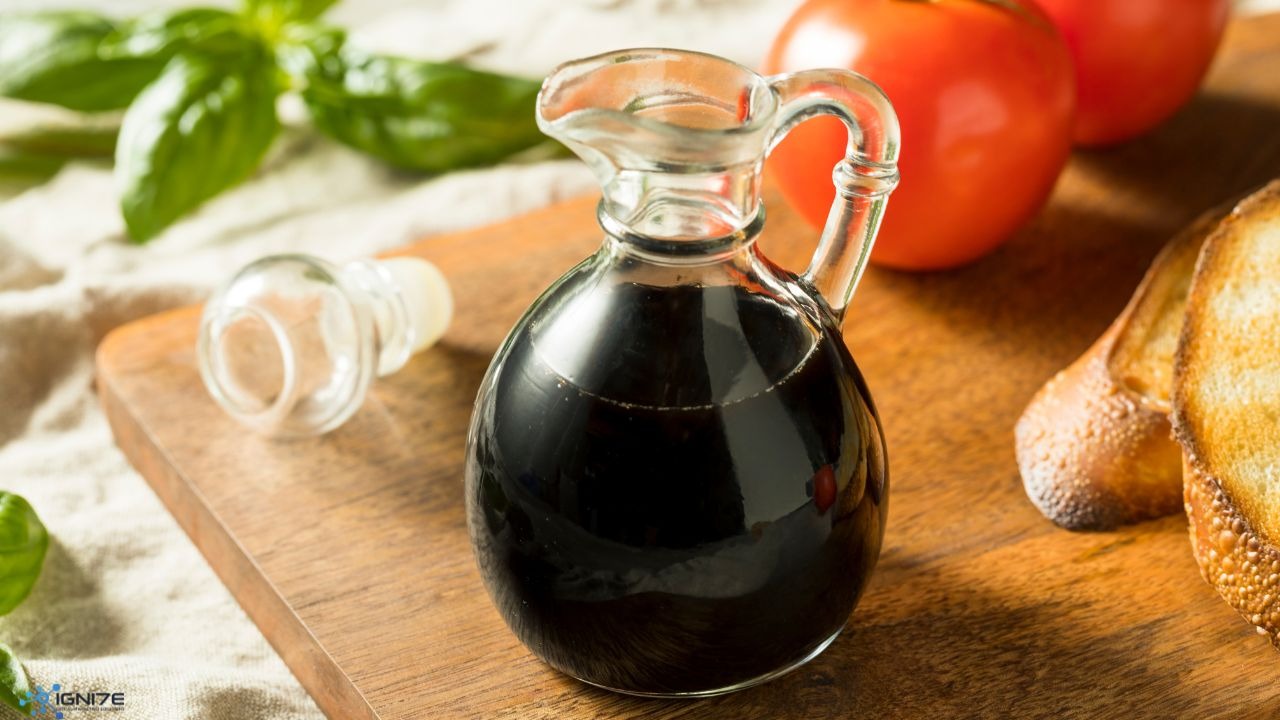
Passons à autre chose, le vinaigre de cidre de pomme : le Japon possède sa propre superstar : le kurozu (vinaigre noir). Vieilli plus longtemps que le vinaigre de riz ordinaire, le vinaigre noir développe une saveur riche et moelleuse ainsi qu'un apport supplémentaire en nutriments. Traditionnellement siroté comme tonique pour la santé ou utilisé en cuisine, c'est un secret de vitalité vieux de plusieurs siècles.
- Principaux nutriments : acides aminés et acide citrique.
- Bienfaits pour la santé : aide à récupérer la fatigue, aide à stabiliser la glycémie, favorise une peau nette, et peut favoriser la gestion du poids.
- Fait amusant : Contrairement aux vinaigres occidentaux, le vinaigre noir japonais a une saveur plus douce, presque maltée, ce qui le rend étonnamment buvable lorsqu'il est dilué avec de l'eau ou mélangé à une boisson rafraîchissante.
Que ce soit dans une vinaigrette ou dans un shot quotidien, le vinaigre noir est doux mais puissant.
5. Soba
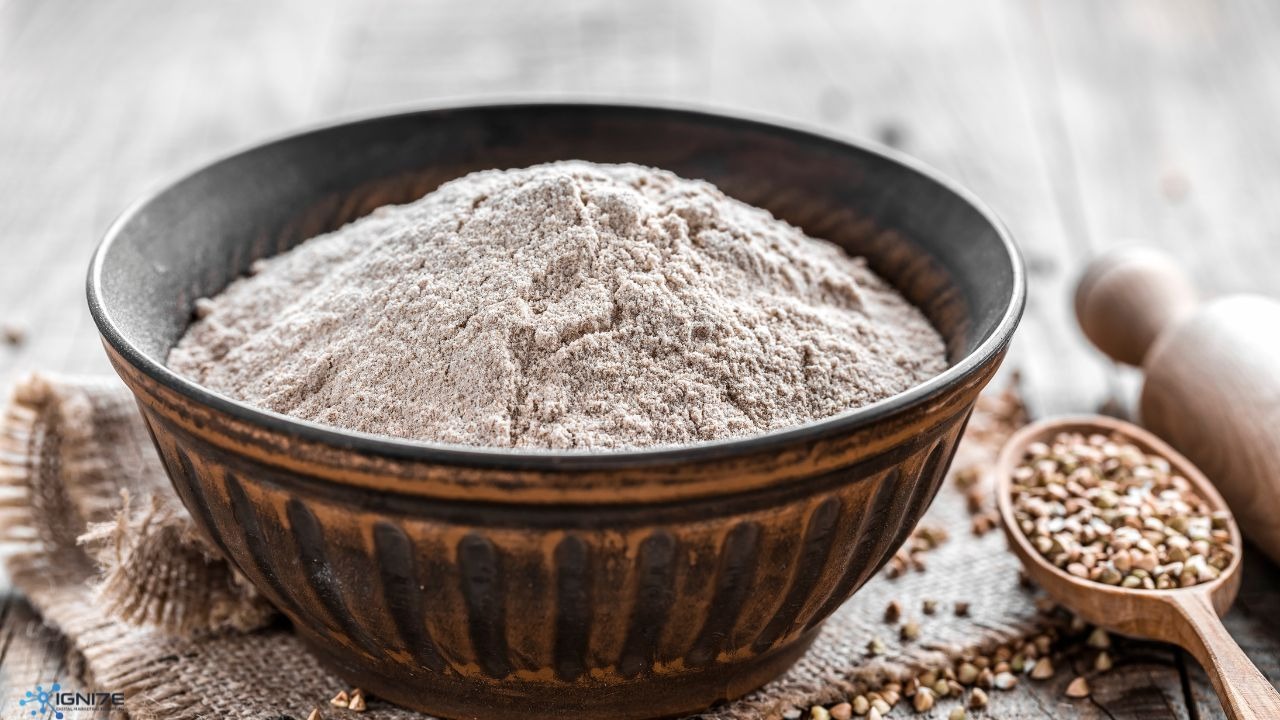
Les soba ne sont pas simplement une alternative plus légère aux pâtes ; ces nouilles au sarrasin sont un aliment de base japonais aux bienfaits considérables pour la santé. Servi frais avec une trempette en été ou cuit à la vapeur dans un bouillon en hiver, le soba est aussi polyvalent que nutritif.
- Principaux nutriments : rutine (un flavonoïde végétal), fibres et protéines végétales de haute qualité.
- Bienfaits pour la santé : Renforce les vaisseaux sanguins, favorise une circulation sanguine saine, aide à réguler le métabolisme des glucides et peut être une option sans gluten (si elle est composée à 100 % de sarrasin).
- Fait intéressant : Manger du soba le soir du Nouvel An, connu sous le nom de toshikoshi soba (), est une tradition japonaise très appréciée qui symbolise une vie longue et saine.
Satisfaisants et bons pour le cœur, les soba prouvent que les nouilles peuvent être à la fois gourmandes et saines.
6. Umeboshi (prune séchée)
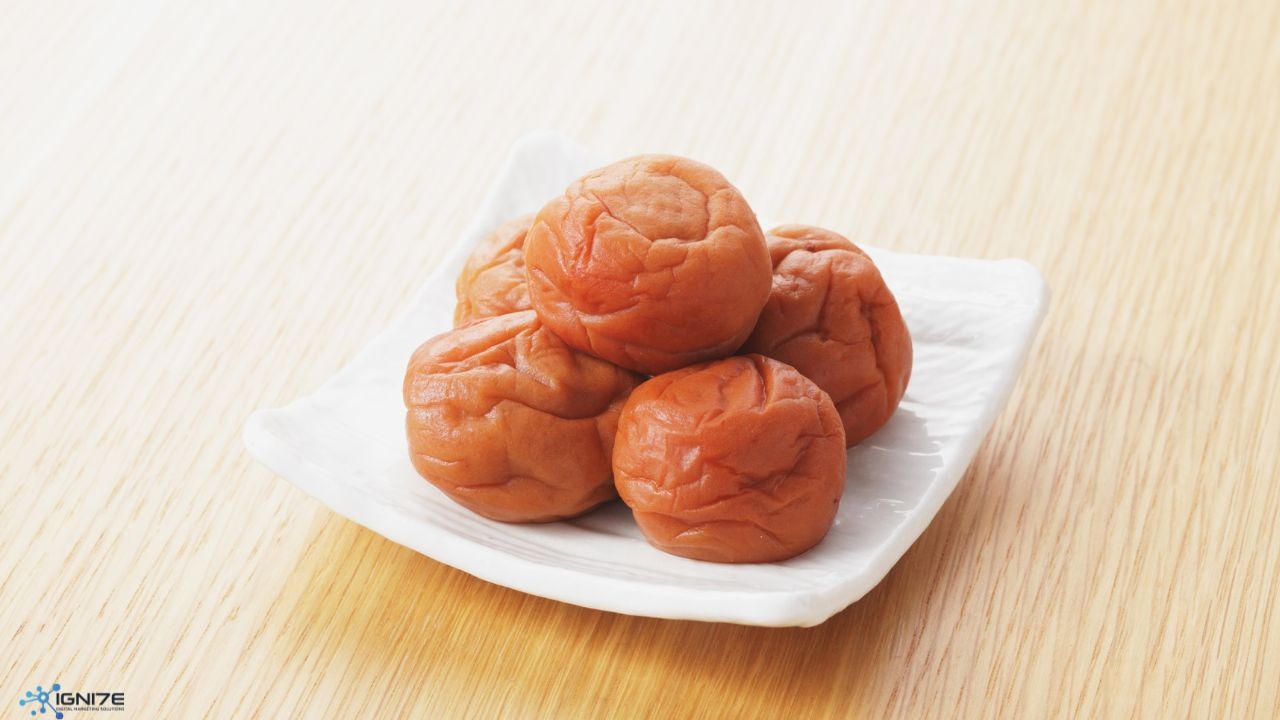
À la première bouchée, l'umeboshi pourrait vous surprendre ; ces prunes marinées sont réputées pour leur acidité et leur sel. Mais une fois passé le cap, vous découvrirez pourquoi ils sont appréciés depuis des siècles à la fois comme nourriture et comme médicament au Japon.
- Principaux nutriments : acide citrique, potassium et polyphénols.
- Bienfaits pour la santé : Accélère la récupération de la fatigue, favorise la détoxification, facilite la digestion et fournit une protection antibactérienne.
- Fait amusant : les guerriers samouraïs avaient l'habitude de transporter l'umeboshi lors de longs voyages, en raison de ses propriétés énergisantes et préservatives. Aujourd'hui encore, une simple boule de riz contenant de l'umeboshi (umeboshi onigiri) est un plat réconfortant japonais classique.
Petit mais puissant, l'umeboshi est l'exemple parfait de « les bonnes choses se présentent en petits paquets ».
7. Yam (Nagaimo, Jinenjo)
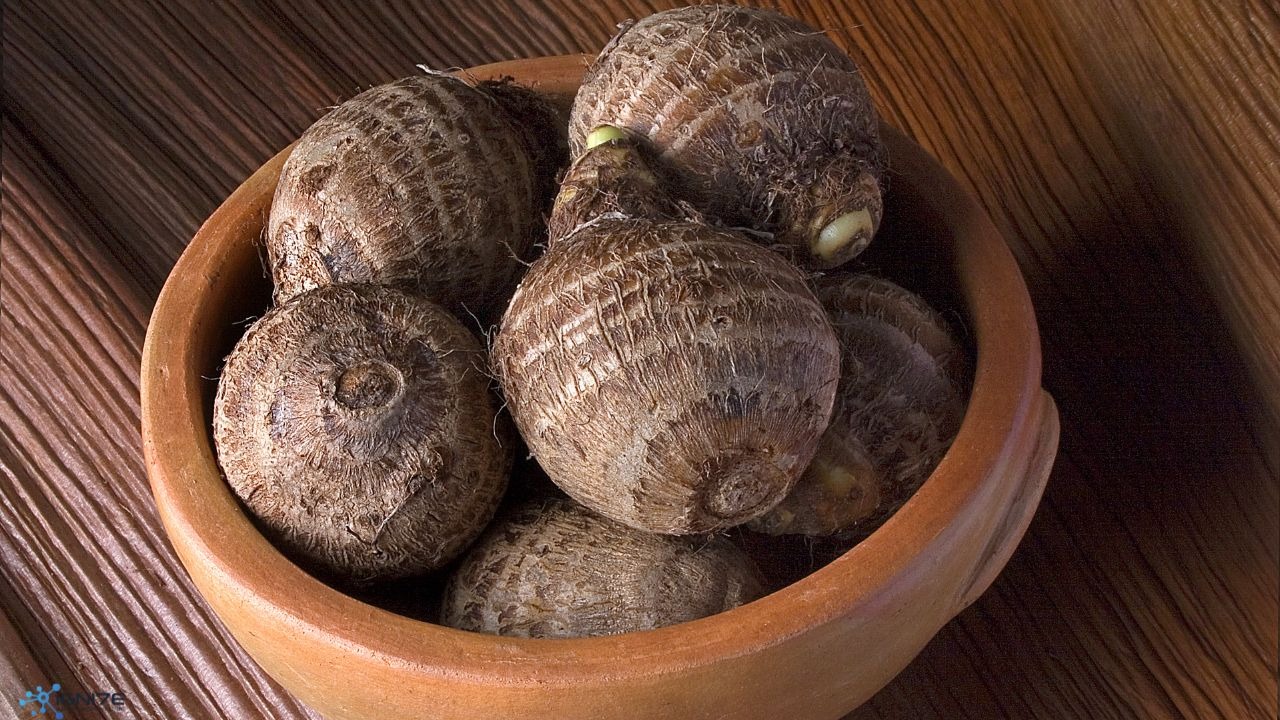
Contrairement aux patates douces auxquelles vous êtes habitués, les patates douces japonaises telles que le nagaimo et le jinenjo sont uniques en raison de leur texture collante et glissante lorsqu'elles sont râpées. Cela peut sembler inhabituel, mais cette qualité gluante provient des enzymes digestives naturelles qui font de l'igname un remède traditionnel contre les problèmes d'estomac.
- Nutriments clés : enzymes digestives, vitamine B1 et fibres alimentaires.
- Bienfaits pour la santé : Favorise une digestion saine, soulage les maux d'estomac, stimule le métabolisme énergétique et favorise la santé intestinale.
- Fait amusant : L'igname râpée (tororo) est souvent servie sur du riz ou des nouilles, ce qui en fait un plat glissant mais étonnamment rafraîchissant apprécié pour ses qualités nourrissantes.
Les ignames japonaises sont la preuve que parfois la racine la plus humble peut être un véritable superaliment.
8. Thé Kombu

Chaud, apaisant et savoureux, le thé kombu (le kombucha n'est pas votre thé typique; il est fabriqué à partir de varech en poudre plutôt que de feuilles de thé. Un favori de longue date pour se ressourcer rapidement, c'est un parfait exemple de la façon dont les Japonais transforment de simples algues en quelque chose d'extraordinaire.
- Principaux nutriments : iode, acide glutamique (source d'umami) et oligo-éléments.
- Bienfaits pour la santé : Soutient le métabolisme, favorise la relaxation et peut aider à réguler la fonction thyroïdienne.
- Fait amusant : le thé Kombu est souvent servi comme une boisson boisson d'accueil au Japon, et c'est en fait le cousin douillet de thé vert.
Une seule gorgée apporte confort, minéraux et umami en une seule gorgée.
9. Amazake
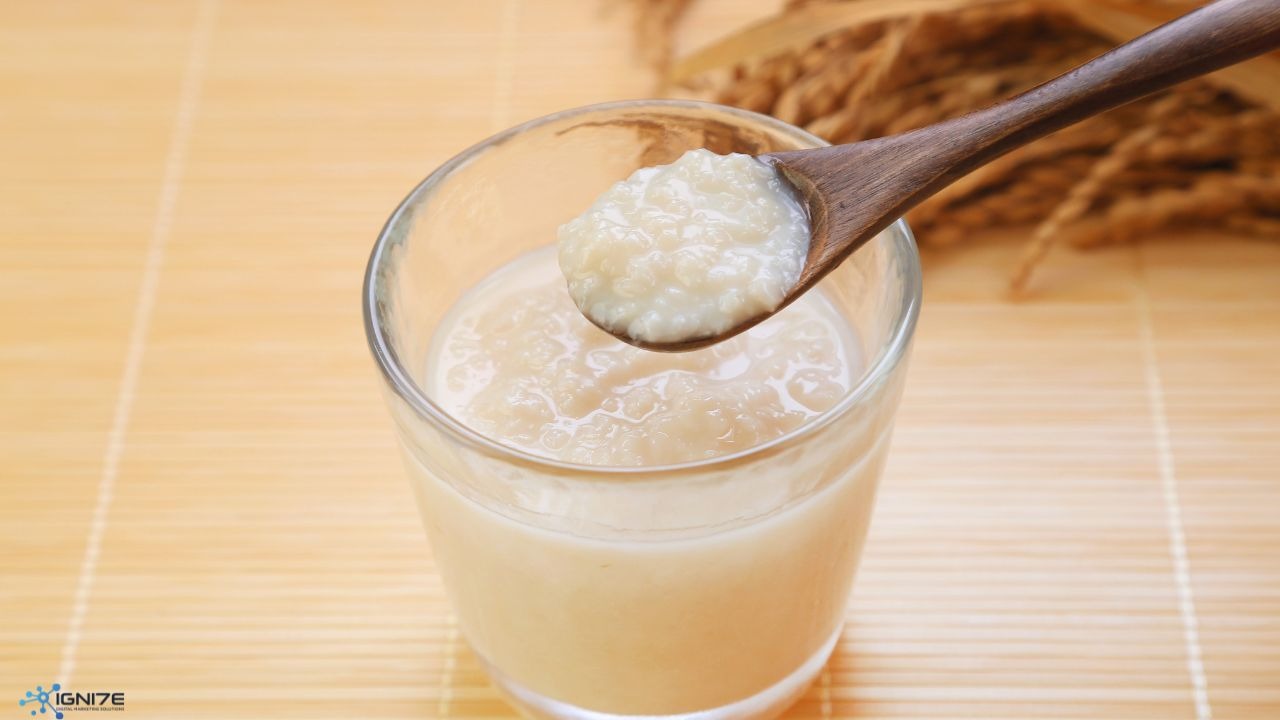
Surnommé « le goutte-à-goutte à boire » au Japon, l'amazake est une boisson à base de riz fermenté naturellement sucrée qui est appréciée depuis plus de mille ans. Malgré son nom (« saké sucré »), de nombreuses versions ne contiennent pas d'alcool, ce qui le rend adapté à tous les âges.
- Nutriments clés : vitamines B, acides aminés, fibres alimentaires et glucose naturel.
- Bienfaits pour la santé : stimule l'énergie, améliore la digestion, soutient santé de la peau, et aide à se remettre de la fatigue.
- Fait amusant : Traditionnellement vendu dans les sanctuaires pendant les fêtes du Nouvel An, l'amazake est à la fois une gâterie de fête et une boisson bien-être quotidienne.
Doux, nourrissant et naturellement sucré, l'amazake est comme un câlin réconfortant pour votre corps et votre esprit.
Conclusion
Qu'il s'agisse de fèves de soja fermentées, d'algues riches en minéraux ou de boissons nourrissantes à base de riz, les aliments traditionnels japonais sont bien plus que de simples aliments de base et constituent de puissants alliés pour le maintien de la santé et de l'équilibre. Chacun des neuf superaliments que nous avons explorés offre des avantages uniques : favoriser la digestion, renforcer l'immunité, renforcer le cœur ou simplement apporter un confort quotidien.
L'incorporation de ces aliments ne nécessite pas de changement radical régime. Un bol de soupe miso, un soba en accompagnement ou même une simple tasse de thé kombu peuvent être une première étape facile. En faisant de petits choix cohérents, vous pouvez profiter de la sagesse de la culture culinaire japonaise tout en favorisant votre propre bien-être.
La cuisine japonaise nous rappelle que la nourriture n'est pas seulement une question de goût, mais aussi de nourriture, de tradition et de longévité. Avec ces neuf superaliments, vous aurez une base pour apporter à la fois santé et saveur à vos repas de tous les jours.



















